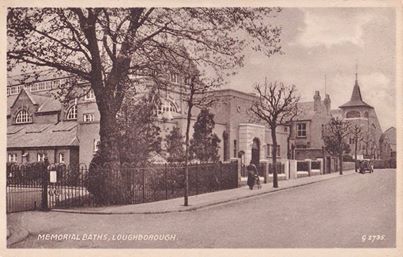To church on Sunday in times past
5 July 2020
In his 1979 publication ‘The Story of Loughborough 1888-1914,’ W Arthur Deakin, son of Echo founder Joseph Deakin whom he followed as director of the company, shared the childhood church-going memories of Mr Norman Bailey, a self-styled ‘Edwardian of Loughborough Congregational Church’ and himself the son of a local dignitary – Thomas W. Bailey, a former Mayor of Loughborough.
In the chapter, Norman recalls ‘the parade of families to church, Father resplendent in a silk hat, Mother’s hat a flower show; boys as near a replica of Little Lord Fontleroy as funds would allow, their outfits handed down from one generation to another; little girls a model of primness.’
The family sat in the pew ‘that grandpa and grandma once used,’ marked out by a card with their name on it, sitting ‘crushed together at one end’ to keep the children from fidgeting. As the service began, their mother passed along a single boiled sweet for each of the three Bailey children and their father unlocked a small cupboard and handed out the necessary books. ‘We knew what to do, and when,’ Mr Bailey says.
‘As the minister was arranging his notes, a low door in the panelling would open and out would come the organ blower.’ Before motorised bellows were invented, someone needed to peddle the bellows to generate the wind needed by the organ. Norman Bailey would later take this role at the Congregational Church, ‘keeping the lead on the string below the mark on the organ casing while the organist performed, hoping that he would not indulge in too much fortissimo which organ blowers know called for extra effort in pumping and more wind in the bellows. Thus, ‘There is a Green Hill Far Away’ was much preferred to ‘Onward Christian Soldiers.’’
Former congregation member Colin Price recalls ‘the service was usually five hymns, with one Old Testament and one New Testament reading, prayers of praise, confession, thanksgiving and intercession, sermon and blessing – normal for a Nonconformist chapel.’
The Bailey family sat opposite the church treasurer, Mr Rowland Hibbins, an ‘old man’ with a white beard reaching to his waist whose ‘opinions on all church matters were sacrosanct, even to the service finishing promptly at noon.’ As Mr Hibbin’s Sunday dinner was at twelve-thirty and he had a mile-long walk to reach it, he insisted the sermon finish at eleven-fifty and would ‘snap shut his large hunter watch for all to hear,’ whether the minister had finished speaking or not.
There was an evening service at the Congregational Church, which Mr Bailey described as ‘a little more adult’ and ‘usually packed with a congregation of around 450.’ During it, the minister ‘often preached for 40 minutes. Dads in their Sunday best blinked, faltered and then sat up straight again. Tired mums, their arms folded under their capes, mused quietly as the dimmed gaslight reflected on the sequins of their bonnets.’
The chapter concludes with a funny story from one of those evening services:
‘One winter’s evening the service was drawing to its close, the caretaker standing in the porch, waiting to lock up. He was talking to a young man waiting for his lady-love, a member of the choir. From time to time he put his ear to a crack in the door to assess progress. But the minister preached on.’
‘Is ‘e done?’ asks the young man.
‘No, ‘e’s not done,’ said the caretaker.
‘I’ll have a walk round,’ says the young man.
‘Yes, you do that,’ came the reply.
Back a little later, ‘is ‘e done?’
The caretaker again went to the crack in the door. After a pause, ‘aye, ‘e’s done,’ says he at length, ‘but ‘e’s not finished.’
From ‘The Story of Loughborough 1888-1914,’ (pub. Echo Press Ltd, 1979) by W Arthur Deakin.
Additional comments from members of the Remember Loughborough Facebook Group (June 2020).
Find out about Loughborough Congregational Church – now the United Reformed Church – here.
Read about church organs here.
Watch a film of the largest church organ in the world here.
